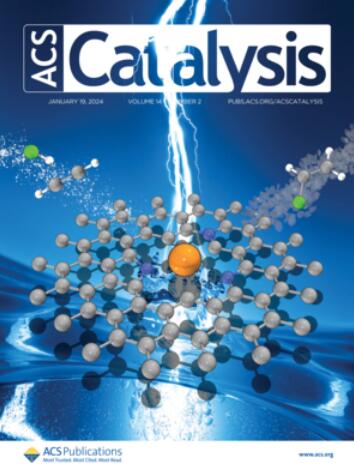Enhanced Photoelectrochemical Water Splitting on BiVO4 Photoanode via Efficient Hole Transport Layers of NiFe-LDH
IF 13.1
1区 化学
Q1 CHEMISTRY, PHYSICAL
引用次数: 0
Abstract
Effective charge separation and transfer at the semiconductor–cocatalyst interface are essential for efficient photoelectrochemical (PEC) water splitting. However, identifying an appropriate interlayer to promote interfacial charge transfer remains a substantial challenge. Herein, a hole transport layer (HTL) composed of NiFe layered double hydroxide (NiFe-LDH) was introduced onto a nanoporous BiVO4 photoanode to suppress interfacial charge recombination. Spectroscopic analyses reveal that the incorporation of the NiFe-LDH HTL facilitates the formation of a favorable energy band alignment, enabling efficient extraction of photogenerated holes from BiVO4 and significantly reducing both interfacial and bulk recombination losses. The subsequent deposition of Co3Ge2O5(OH)4 as the oxygen evolution catalyst (OEC) further enhances the charge transfer kinetics and surface oxygen evolution reaction (OER) activity, as verified by photoelectrochemical experiments and theoretical calculations. Consequently, the BiVO4/NiFe-LDH/Co3Ge2O5(OH)4 photoanode achieves a photocurrent density of 5.15 mA/cm2 at 1.23 V versus the reversible hydrogen electrode (VRHE), along with excellent operational stability. Additionally, charge separation and injection efficiencies of 92.6% and 87.2% are achieved at 1.23 VRHE, respectively. These findings underscore the critical role of the HTL in tailoring interfacial energetics to advance efficient solar water oxidation.

NiFe-LDH高效空穴传输层增强BiVO4光阳极上的光电化学水分解
在半导体-助催化剂界面上有效的电荷分离和转移是实现高效光电化学水分解的必要条件。然而,确定一个适当的中间层来促进界面电荷转移仍然是一个重大的挑战。在纳米多孔BiVO4光阳极上引入了由NiFe层状双氢氧化物(NiFe- ldh)组成的空穴输运层(HTL)来抑制界面电荷重组。光谱分析表明,nfe - ldh HTL的掺入有助于形成有利的能带对准,从而能够有效地从BiVO4中提取光生空穴,并显着降低界面和体复合损失。随后沉积Co3Ge2O5(OH)4作为析氧催化剂(OEC),进一步提高了电荷转移动力学和表面析氧反应(OER)活性,这得到了光电化学实验和理论计算的验证。因此,与可逆氢电极(VRHE)相比,BiVO4/NiFe-LDH/Co3Ge2O5(OH)4光阳极在1.23 V下实现了5.15 mA/cm2的光电流密度,并具有出色的操作稳定性。此外,在1.23 VRHE时,电荷分离和注入效率分别达到92.6%和87.2%。这些发现强调了HTL在调整界面能量学以促进有效的太阳能水氧化方面的关键作用。
本文章由计算机程序翻译,如有差异,请以英文原文为准。
求助全文
约1分钟内获得全文
求助全文
来源期刊

ACS Catalysis
CHEMISTRY, PHYSICAL-
CiteScore
20.80
自引率
6.20%
发文量
1253
审稿时长
1.5 months
期刊介绍:
ACS Catalysis is an esteemed journal that publishes original research in the fields of heterogeneous catalysis, molecular catalysis, and biocatalysis. It offers broad coverage across diverse areas such as life sciences, organometallics and synthesis, photochemistry and electrochemistry, drug discovery and synthesis, materials science, environmental protection, polymer discovery and synthesis, and energy and fuels.
The scope of the journal is to showcase innovative work in various aspects of catalysis. This includes new reactions and novel synthetic approaches utilizing known catalysts, the discovery or modification of new catalysts, elucidation of catalytic mechanisms through cutting-edge investigations, practical enhancements of existing processes, as well as conceptual advances in the field. Contributions to ACS Catalysis can encompass both experimental and theoretical research focused on catalytic molecules, macromolecules, and materials that exhibit catalytic turnover.
 求助内容:
求助内容: 应助结果提醒方式:
应助结果提醒方式:


